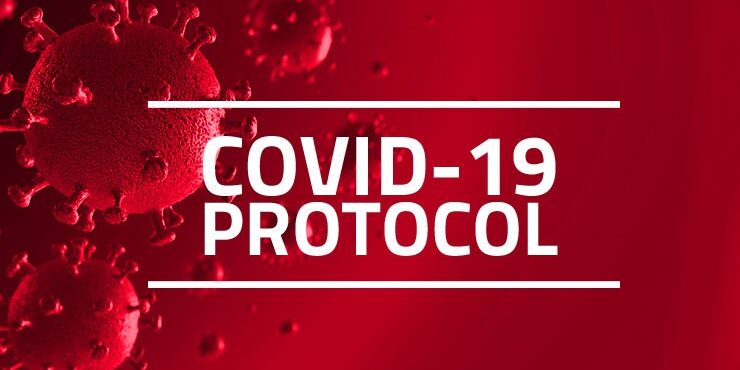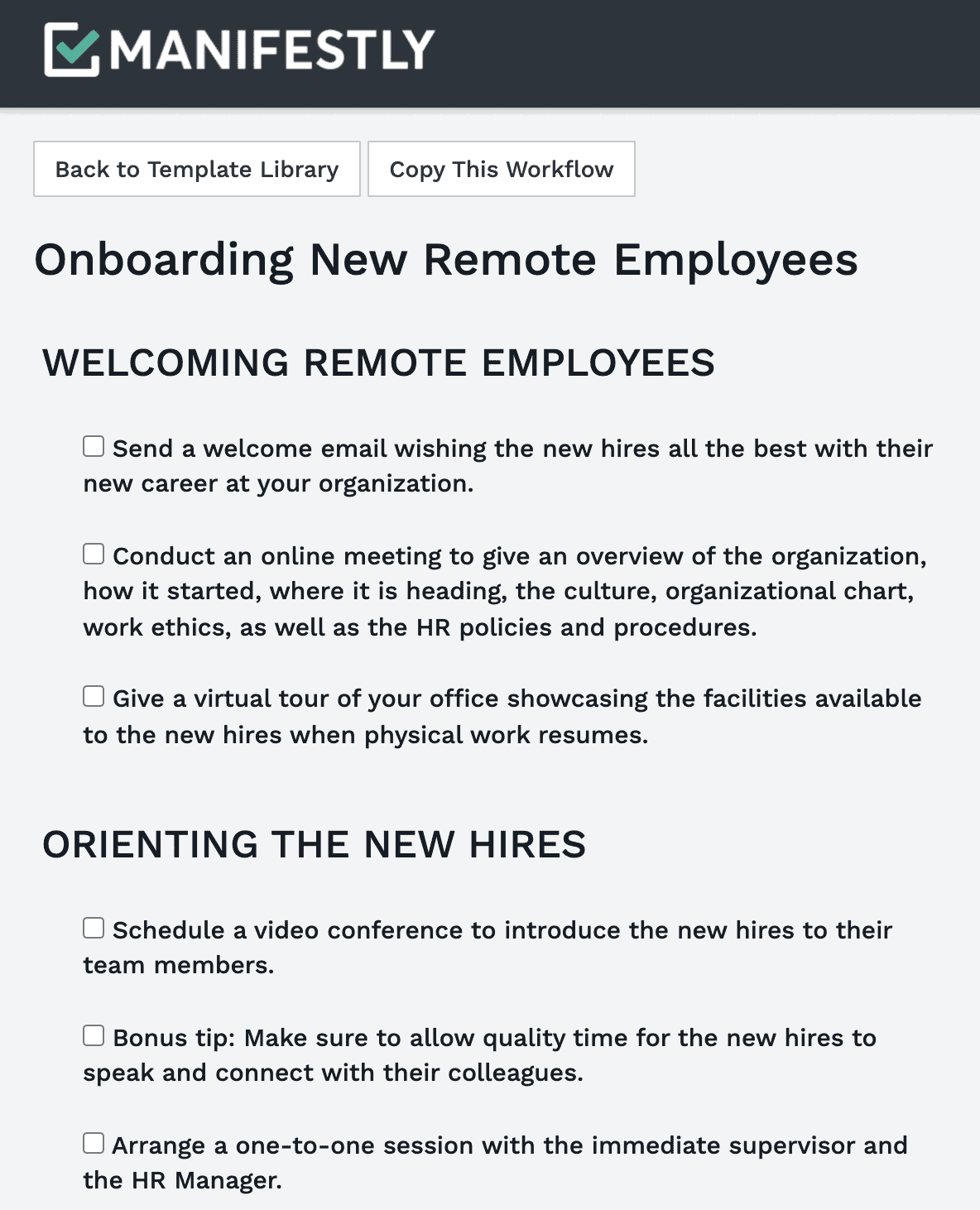
When it comes to the unpleasant event of firing employees, having a termination checklist is critical for more reasons than you think.
Your mind may already be going to lawsuits—preventing them, that is. And that’s understandable. Of course you want a well-documented, thorough set of procedures to go through so that your company’s backside is covered.
But a carefully prepared and implemented termination checklist can benefit more than just the company itself. Managers who do the terminating, the remaining staff, and even the employees who are fired are better served when there’s a good termination checklist established.
Five Reasons Why You Need a Termination Checklist
1. Keep Company Morale Strong
A termination doesn’t happen in a vacuum. Suzanne Lucas knows this as well as anyone. She’s been part of literally thousands of terminations over her 20 years in human resources.

Lucas says when you fire someone, employees make a judgment. Of course, they may not know all the details. But they’re going to judge nevertheless. Was it handled fairly? Did the company act respectfully? Did it seem out of the blue, or was it well-known that the person fired had been struggling or screwing up a lot?
If the termination really was unfair, at least from your employees’ perspective, “Then you’re really in big trouble, and I’m not even talking about a lawsuit from the terminated employee,” says Lucas.
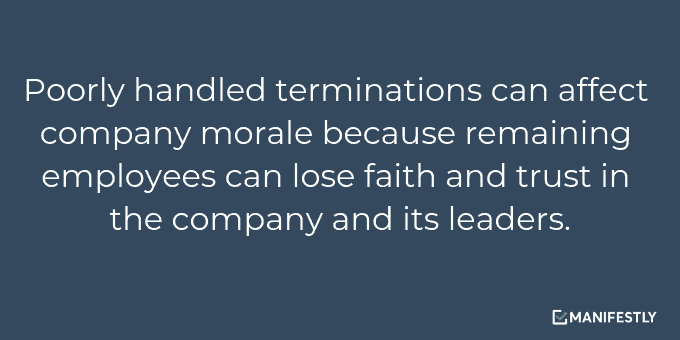
Poorly handled terminations, says Lucas, can affect your company morale because remaining employees can lose faith in the company and its leaders.
Yes, firing employees can be unsettling for your staff. But if you want to create safeguards to prevent unfair and capricious firings, use your termination checklist appropriately. Go through the steps needed to justify the termination, not just legally speaking but for the court of employee opinion.
2. Minimize Turnover
Don’t discount the relationship between termination and turnover. Lucas says when staff see a termination as nasty or unfair, they may start looking elsewhere for work. And that can lead to increased turnover.
Although it can be hard to quantify, turnover is generally considered a painful expense because it takes a lot of time and effort to train new staff. This is especially true when your top talent leave.
“No, people won’t change jobs on a whim because job hunting sucks,” says Lucas. “But remember that your best employees, especially in today’s market, have the most options.”
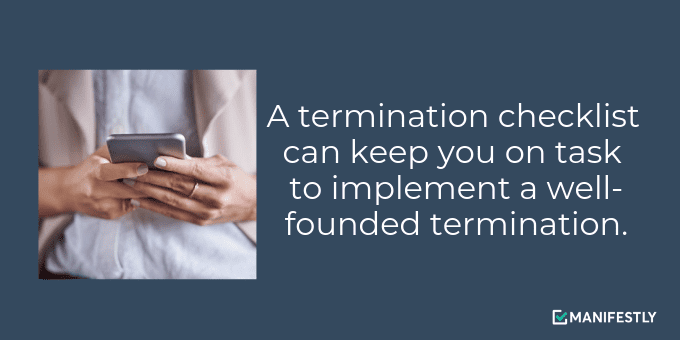
A termination checklist, especially for individual firings, can keep you on task to implement a well-founded termination. When you’re confident in your process and in your reasons for terminating a specific employee, your staff can tell. They may feel bad about the termination, but they won’t necessarily be wondering, “Am I next?”
3. Send the Right Message Beyond Your Company Walls
When you terminate employees, don’t forget about your company’s reputation. Like it or not, how you terminate employees can be seen as emblematic of who you are as a company. What kind of signal do you want to send to your community or the general public?
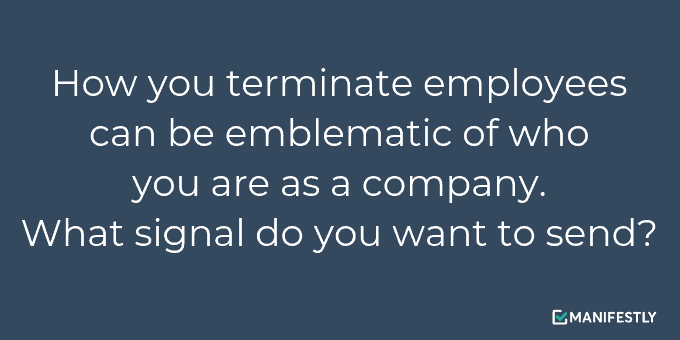
This is especially true for mass terminations. Microsoft botched a large-scale layoff five years ago and inadvertently established a template for how not to fire employees.
One major way to counter the potential messiness of a termination is to have a methodical checklist process in place. No, even the most thorough checklist won’t eliminate the pain of termination. But it can definitely make the process go smoother. And that’s huge.
As it turns out, how a termination is handled can end up being the most important factor in minimizing lawsuits and containing the negative spillover that can come with a termination.
4. Reduce Lawsuits by Showing Respect
HR consultant Mike Haberman has more than 40 years of experience with terminations. Over that time, he’s concluded that fired employees sue their employer for one reason above all others: “They feel you have been disrespectful to them.”
Haberman says checklists can actually play a critical role in showing respect. Now you might think that systematically going through a checklist during a termination creates a cold, robotic feel to the process. Where’s the respect in that? But Haberman says it’s really the opposite.
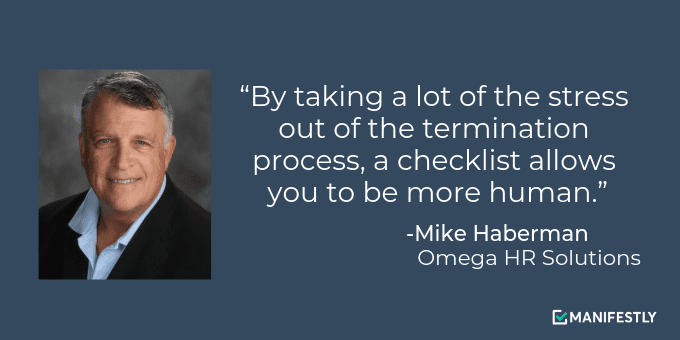
With a checklist of procedures to work from, says Haberman, you don’t have to think a lot about the steps you need to take. You can feel more comfortable, competent, and confident in what you’re doing.
“By taking a lot of the stress out of the termination process, a checklist allows you to be more human,” says Haberman. “I think that checklist technology can actually free you up to treat the employee with more dignity and respect.”
5. Be Well-Prepared Should You Go to Court
Why do people get fired? At-will employment is the predominant law of the land, which basically means an employer can fire a person for any reason they want, provided it’s not an illegal one.
That sounds simpler than it really is. Lucas says that, as an employer, you don’t really want to push the at-will idea too far. “It’s risky,” she says. Ultimately, you want to be confident that your reason for firing someone is a good one—and you should be able to back it up.
Why you’re firing someone should never be ambiguous. Document the reasons unequivocally as part of your checklist process, and state those reasons clearly and fully to the terminated employee.
Lucas cautions that once you state verbally and/or in writing why you’re firing someone, you’re bound to that reason. If you end up in court, you’re going to be required to defend that reason. Adding or changing your reasons for the termination won’t do you any good once you’re in court.
Five Critical Components for Your Termination Checklist
There’s no generic termination checklist that can cover it all. That’s because the checklist has to reflect the unique internal requirements of your company and the various jurisdictional laws that your company falls under at the federal, state and municipal level.
Though by no means exhaustive, the following can help you set the stage for a rigorous checklist. Note that it includes both specific items and crucial considerations.
1. Make a Performance Improvement Plan Part of Your Checklist
Good documentation is crucial in the termination process and needs to be integral to your overall termination checklist. One of the most important elements in this can be a performance improvement plan.
For an employee whose work is consistently not up to snuff, a plan like this, according to Lucas, can accomplish a lot: It warns them that things need to change, gives them a chance to improve, allows for a clean termination should it come to that, helps the terminated employee better understand the firing, and provides good documentation for the termination.
Sample Checklist Items:
- Document poor performance to date.
- Meet with employee, detail performance problems, initiate improvement plan.
- Set specific improvement expectations in meeting one.
- Establish 60- to 90-day timeline and meeting schedule to track progress or lack thereof.
- Meet on final day of plan to discuss next steps: termination or continued employment.
2. Get Back What You Need
This covers everything from the large and (seemingly) obvious to the small and invisible. For many of these things, you’ll need IT support. But remember you need to prepare for and carefully time how you, for example, shut down an employee’s computer access and email.
If you fail to address items like the ones below before the person is out the door, the termination can get a lot messier.
Sample Checklist Items:
- Retrieve company car, keys, etc.
- Check with IT for inventory of smartphones, laptops, and tablets you need returned.
- Secure ID badge, key card, and similar items.
- Make sure there is no other outstanding equipment you need back.
- End access to any company credit card accounts.
- Make sure employee returns actual company credit cards.
- Take steps needed to change passwords to accounts, databases, or any other sites the employee had access to. Also, do you need to get passwords from employee?
- Ask for company uniforms and any other company accessories you ideally would like back.
- Retrieve client lists that may be squirreled away in employee’s own files.

3. Address Pay and Benefits Thoroughly
“You want to try and avoid screwing people’s lives up any more than you have to,” says Haberman. That means making sure you have all the paperwork prepared ahead of time for critical items like the following, many of which must be addressed within specific time frames.
Miss those time frames and you’re doing more than making a person’s life extra difficult; you now have violated laws, says Haberman.
Sample Checklist Items:
- Provide all necessary health insurance information, especially COBRA forms.
- If relevant, present severance package details and agreement forms to sign.
- Give information on options for 401(k) and any other savings plans.
- Bring all government forms needed to file for unemployment.
- Address remaining wages or salary to be paid. (California requires same-day paycheck for terminations).
- Update employee payroll and other important company records to reflect the termination.
4. Be Prepared and Confident in the Face of a Lawsuit Threat
You will likely want to present a letter that explains the reasons for termination. Some jurisdictions require it. You may also need the terminated employee to sign it. But do not pressure the person to sign it, cautions Lucas.
“I cannot tell you how many times people have said to me, ‘I’m going to show my lawyer this!’ My answer is always the same: ‘I highly recommend you take it to an attorney,’” Lucas says.
Very few people follow through because right there and then the person knows you are certain in what you’re doing, explains Lucas.
But of course, you really do need to feel you’re on solid ground with the termination letter and your termination reasons. If in reality you don’t, then that’s obviously a problem, she says.
One other point: Make sure relevant parties have signed off on the termination letter to prevent the employee from trying to go over your head, says Lucas.
Sample Checklist Items:
- Draft letter that explains reason for termination.
- Get sign-off from all involved parties.
- Present letter that explains reason for termination.
- Explain letter to employee.
5. Time Appropriately and Terminate Strategically
Both Lucas and Haberman are firm believers that you don’t fire people on Fridays. “Don’t give them the weekend to sit and stew and get madder and madder about it,” says Haberman. Firing an employee early in the week gives them a moment to breathe and then start looking for a job, he says.
As for what time to fire someone, Lucas says, “I’ve always felt it’s really tacky to fire someone at 4:30.” She recommends doing it in the morning and paying them for a full day.
Other considerations:
- Be cognizant of the termination meeting length. It should take no longer than 15 minutes.
- Make sure you have a witness. It should never just be the manager and employee. Ideally, you want someone from HR, says Lucas. But if that’s not available, the witness should be a peer of the manager.
- Script or at least carefully plan what you’re going to say and stick to it.
- Don’t discuss or argue your points.
- Do reconnaissance on how the employee gets to work. If they carpool or use a company car, be prepared to pay for their transportation home and/or for the employees that rode with the person.
- Let them clear out their desk without hovering, suggests Lucas, and give them the option to come back tomorrow for their things.
- Do you have any warning signs to expect a violent reaction? You may want law enforcement on site if so.
- In rare situations, you may want to consider precautions in the days following the termination if you have reason to fear a violent return by the terminated employee.
Sample Checklist Items:
- Check for history/indications of violent reaction to termination.
- Take necessary precautions if person is deemed a risk for violence.
- Verify the person has transportation home immediately following termination.
- Designate manager to handle termination meeting.
- Designate appropriate witness.
- Prepare exactly what will be said to employee.
Do You Need Outside Consulting?
If you want to be certain about the thoroughness of your termination checklist, bring in outside expertise, especially if you’re a smaller company without a robust HR department. “This is no time to be penny wise and pound foolish,” says Haberman, who points out that it’s much easier to spend on preparation rather than the alternative.
“Defending a lawsuit can start at $50,000—and that’s if you win,” says Lucas. When you bring in an HR consultant, she explains, they can do things like . . .
- Check your overall termination process to see if it’s good to go.
- Train staff on how to deliver a termination.
- Create a script to follow during the termination process.
- Help design performance improvement plans.
- Observe and/or provide support during actual terminations.
From an HR consultant’s perspective, “Some things are pretty open and shut,” says Lucas. But she also says there are times when an HR expert might say you need to consult a lawyer.
This is especially true as you’re preparing to do an actual termination. “When in doubt, call your employment lawyer. I cannot emphasize this enough,” says Lucas.
Have a Termination Checklist? Then Use It Consistently
Perhaps you’ve heard the Ralph Waldo Emerson quote that goes, “A foolish consistency is the hobgoblin of little minds.” If you’ve taken the time to create a thorough termination checklist, you’re on your way to having what Emerson might have called a “smart consistency.”
But here’s a crucial point about that smart consistency: You actually need to use it . . . consistently.
Haberman says he routinely sees companies fail to implement their termination checklists. In some cases, he says a person in HR may have created it, but then it gets turned over to someone in another department, maybe someone who hasn’t really bought into it.
“Inconsistent use is how things get forgotten. And that’s how litigation can arise. It may be the greatest checklist possible, but if it’s sitting unused in a drawer or out in cyberspace, it’s not doing anyone any good,” says Haberman.
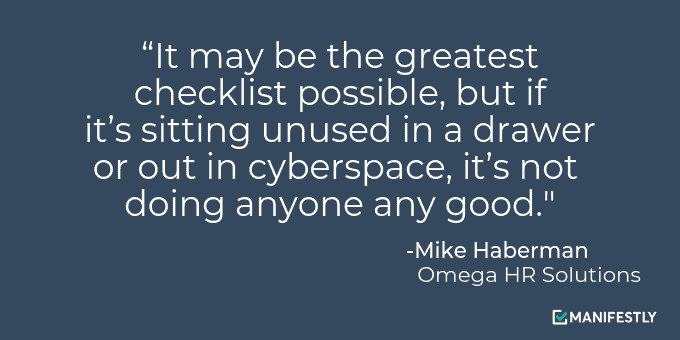
A checklist can be an excellent guide for you over the course of a termination process. Make the effort to create a thorough one, and then, as Haberman puts it, “Live it. Life will be easier for everyone involved.”

